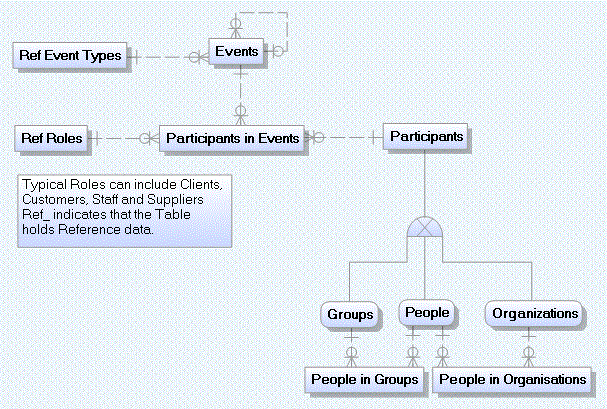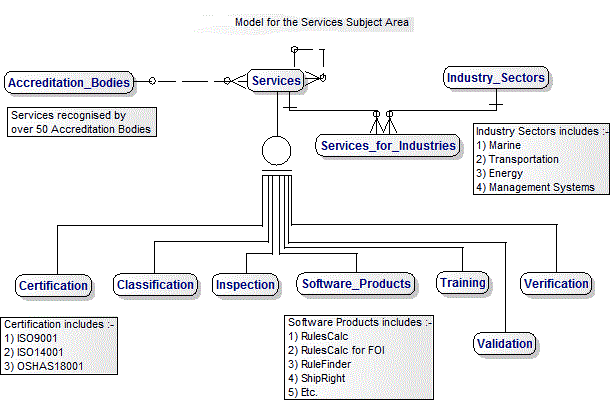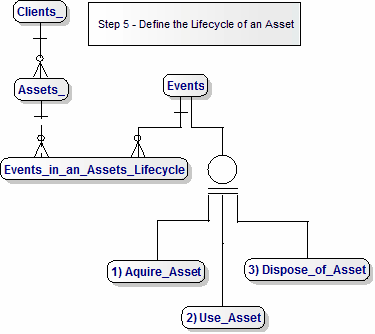Step 1 - Establish the Semantic Model and describe the functionality :- "Services are provided to Clients to ensure that their Assets comply with the appropiate Rules and Regulations.

1. Assets This is the Product Catalogs Data Model
2. Clients We use our Data Mode for Parties, Roles and Customers.

3. Client Services We use our Data Mode for Customers and Services.

4. Documents we have a number of Document-related Models in our Library so for the moment we use the one for Generic Document Management. The Documents will include Reports and results of Assessments and ISO Certifications

5. Pricing we have a Data Model for generating Financial Statements. This is driven by Chart of Accounts and General Ledgers.

6. Schedules we have a Data Model for Schedules for Container Shipping. This is specificc to Container Shipping.

7. Services we have many Data Models for Services and we have chosen this one for Services.

8. Workflow we have a Data Model for Workflow.

Following an Event-oriented Approach

Step 10 - Finally, create the 'Business-friendly' Semantic Model This is specifically designed to be the 'Business-friendly' and to provide a vehicle for communication with business users and Subject Matter Experts. We have not shown the 'Rabbits-Ears' to keep the diagram simple and easier to understand.
